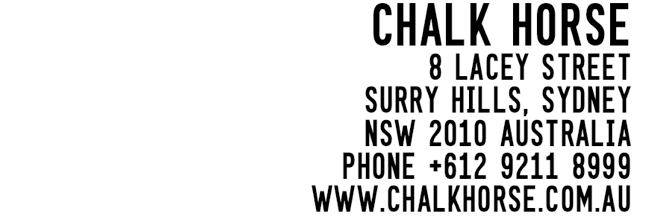 | ||
| Julian Meagher From where you'd rather be (2011) 150 x 180 cm Oil on linen |
 | |
| Julian Meagher Nanjing peasant produces Black Label to celebrate the good news (2011) 60 x 60cm Oil on linen |
 |
| Julian Meagher Only real men wear pink (2011) 120 x 120 cm Oil on linen |
 |
| Julian Meagher Strong Men Also Cry (2011) 150 x 180 cm Oil on linen |
The son of a father who insists that "only real men wear pink", Julian Meagher's latest body of work is an extension of his ongoing investigation into modern-day masculinity; it's rituals, it's boundaries, it's icons. The work in this exhibition presents us with a marriage of interests, every element is balanced by its counterpart. Where there is masculine, there is feminine, where there is blue, there is pink, and where there are elements of the foreign and exotic, there are bold trophies of Australiana.
In Western culture, the practice of gender-dimorphic colour coding in pink/blue for female/male is actually an inverse of its original assignment. From the late 19th Century through until the 1940's it was deemed more appropriate to dress girls in blue because of its daintiness and its connotations to the robe of the Virgin Mary. Pink was deemed better suited to boys because of its' proximity to red; the colour of passion, blood and fire.
An attraction to Oriental design has led Meagher to continue to return to Japanese tattoos and Chinese Ming vases for subject matter within his paintings, and his clinical presentation allows us to appreciate the form of each object as it's own entity, as well as in terms of its contribution to a broader composition.
Taking the archetypal domestic and picnic scenes that adorn these vases, Meagher articulates them within an Australian framework through the playful inclusion of the iconic Victoria Bitter and Johnny Walker. The slab of beer as well as the bottle of scotch takes centre focus amongst small groupings of people, presenting it as an object of almost religious significance.
Meagher's titles and his colour balance within his work toys with notions of what is masculine, and how we perceive it. The figures that occupy the show disclose a gamut of examples of masculinity; the binary nature of the components of Strong Men Also Cry presents paintings that embody a synthesis of density of content and layers of meaning, which Meagher balances with a thoughtful and clinical presentation. These paintings oscillate between presence and absence. What is left is a porthole through which we may glimpse instances of cultural reckoning in both intimate, personal chronicles and broader historical contexts.
- Kat Sapera, 2011 (full article available as catalogue essay)
In Western culture, the practice of gender-dimorphic colour coding in pink/blue for female/male is actually an inverse of its original assignment. From the late 19th Century through until the 1940's it was deemed more appropriate to dress girls in blue because of its daintiness and its connotations to the robe of the Virgin Mary. Pink was deemed better suited to boys because of its' proximity to red; the colour of passion, blood and fire.
An attraction to Oriental design has led Meagher to continue to return to Japanese tattoos and Chinese Ming vases for subject matter within his paintings, and his clinical presentation allows us to appreciate the form of each object as it's own entity, as well as in terms of its contribution to a broader composition.
Taking the archetypal domestic and picnic scenes that adorn these vases, Meagher articulates them within an Australian framework through the playful inclusion of the iconic Victoria Bitter and Johnny Walker. The slab of beer as well as the bottle of scotch takes centre focus amongst small groupings of people, presenting it as an object of almost religious significance.
Meagher's titles and his colour balance within his work toys with notions of what is masculine, and how we perceive it. The figures that occupy the show disclose a gamut of examples of masculinity; the binary nature of the components of Strong Men Also Cry presents paintings that embody a synthesis of density of content and layers of meaning, which Meagher balances with a thoughtful and clinical presentation. These paintings oscillate between presence and absence. What is left is a porthole through which we may glimpse instances of cultural reckoning in both intimate, personal chronicles and broader historical contexts.
- Kat Sapera, 2011 (full article available as catalogue essay)
 |
| Julian Meagher You can get it milking a cow (2011) 120 x 80 cm Oil on linen |
Julian Meagher is a 32 year old Sydney-based artist, working from his studio in Surry Hills. Four years ago he left work as medical doctor to pursue painting full-time. He currently shows at Chalk Horse Gallery in Sydney (of which he is also a director), Lindberg Gallery in Melbourne, Gallery Ecosse in Exeter, Edwina Corlette Gallery in Brisbane and Cat Street Gallery in Hong Kong.
Lindberg Gallery (Melbourne, VIC) 01- 30 April 2011
www.lindbergcontemporary.com.au
www.lindbergcontemporary.com.au
Gallery Ecosse (Exeter, NSW) 09 April – 07 May 2011
www.galleryecosse.com.au



















